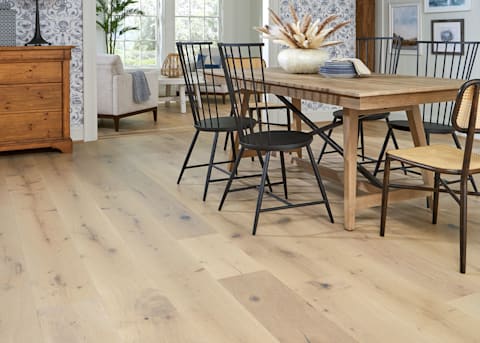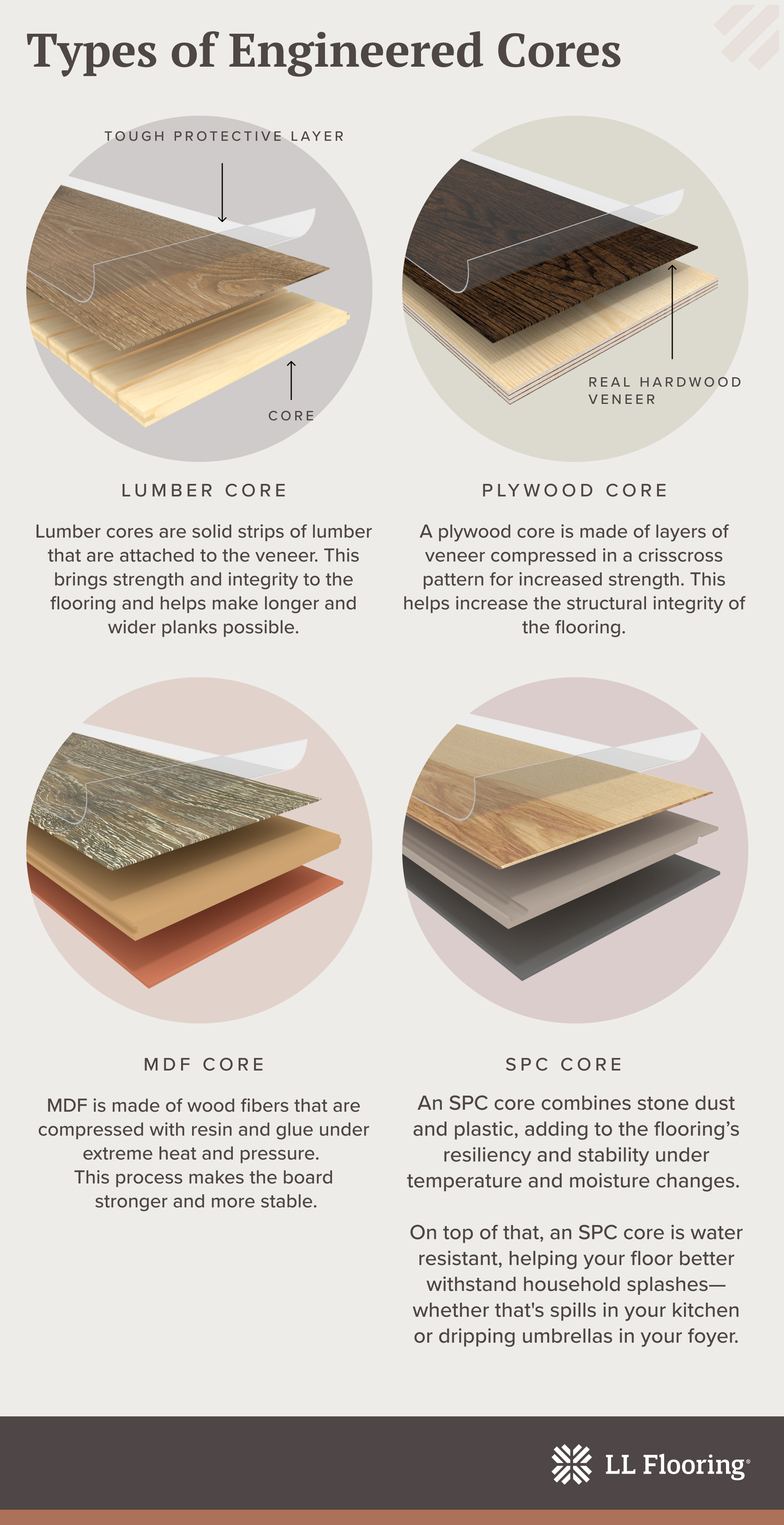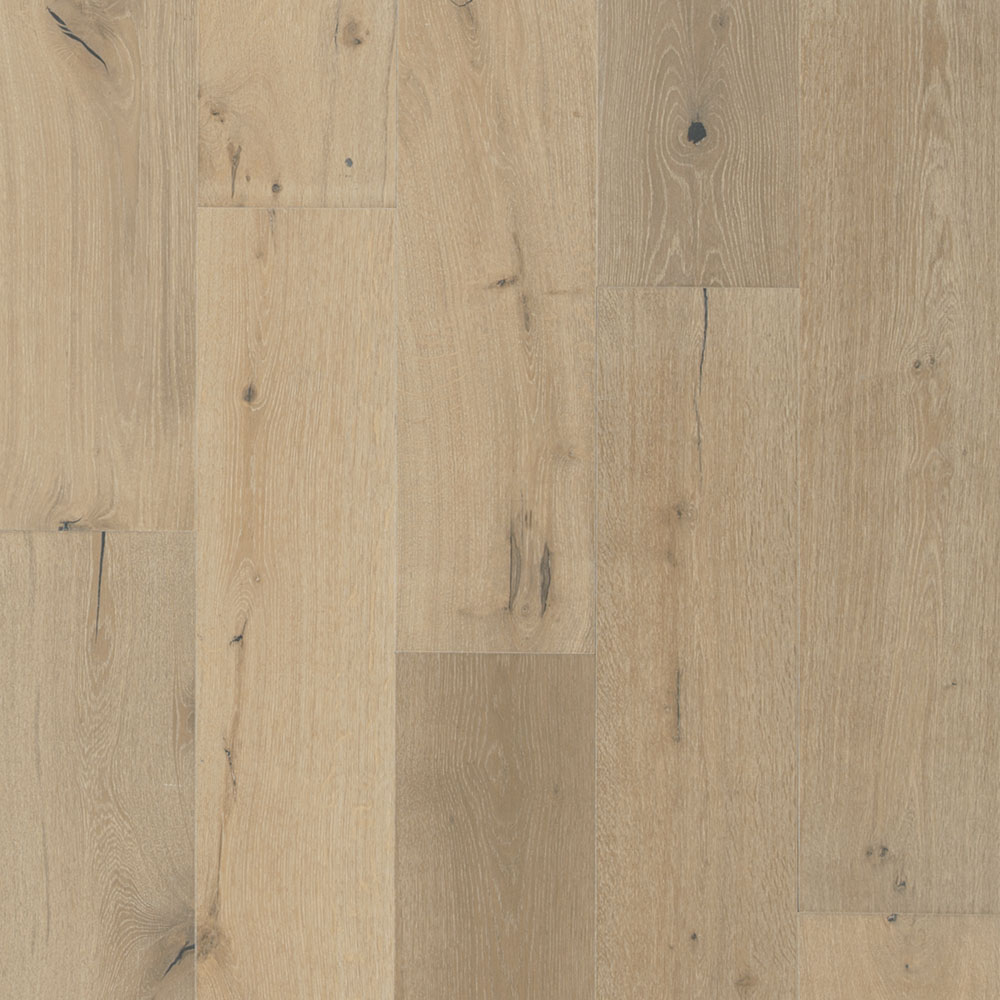- Home
- Education
- Flooring Basics
- Learn Engineered Wood Flooring Types
Learn Engineered Wood Flooring Types
Engineered hardwood floors feature innovative construction and advanced performance. Learn what makes types of engineered hardwood popular for homeowners.
The development of engineered hardwood flooring allows more people than ever before to enjoy the advantages of hardwood. In fact, because of the advances in construction, engineered hardwood can be enjoyed in any level of your home, even in higher moisture areas like your basement or in areas where humidity levels may change more drastically, like a sun room. This includes humid climates where solid hardwood boards are not recommended.
Choosing the best type of engineered hardwood flooring for your home requires understanding the options available to you and what each has to offer. Once you're familiar with the various key benefits, you can better choose the right fit for your home.

What Is Engineered Hardwood?
Engineered hardwood is an innovative type of hardwood flooring. Judging solely from appearances, it's tough to tell any difference between solid and engineered hardwood floors. But instead of a single, solid piece of wood, engineered hardwood consists of layers of a single layer of real wood on top of different materials glued together and tightly compressed into a strong board with enhanced characteristics that we'll discuss more in a bit.
The Layers of Engineered Hardwood
The Veneer
The top layer of an engineered hardwood board is a top layer, also known as a veneer, made from natural hardwood. This is the layer you see and touch, so you get the same warmth and richness solid hardwood offers. In addition, you get greater versatility and performance due to the core layer underneath the top veneer.
The Core
The core layer gives your flooring enhanced strength and stability, making your board even more stable than solid hardwoods. There are four core constructions, which make up the four key engineered wood flooring types:
Plywood
A plywood core is made of compressed layers of plywood, cross-grained against one another to provide better strength and structural integrity. This creates better stability and helps secure your floors in place, reducing the risk of moisture damage and improving the feel of the floor underfoot.
Lumber Core
Lumber core gives boards the strength and rigidity you would experience with solid floors. The core itself consists of strips of lumber with grain perpendicular to the top veneer.
Medium Density Fiberboard (MDF)
MDF consists of tightly compressed wood fibers and resin or glue; the high density and strength of an MDF engineered floor are thanks to being made under high pressure and temperature. This improves the core's strength, so your floor feels more solid and secure underfoot.
Stone-Polymer Composite (SPC)
This core is made by combining particles of polymer with stone dust to create a strong, tough core. Look for this core if your household is a busy one. It improves water resistance, so your floors can withstand kitchen spills and bathroom splashes. Finally, SPC excels at maintaining stability when there are variations in temperature or humidity.
More Options to Choose From
Figuring out what type of engineered hardwood core is better for your home isn't your only consideration. But choosing all the details yourself helps you realize the home of your dreams, so the more choices, the better.
Unfinished Hardwood
For the DIYer who likes to put a personal touch on your home, an unfinished hardwood might be just the right choice. It's ideal for when you have custom stains or various stains, borders, inlays, or special finishes in mind. If you want your stain to match the color you used on a piece of furniture or on the floor in another room, an unfinished hardwood floor can help you do that.
Domestic Hardwood
Domestic hardwood refers to wood that comes from North America. These woods can be from various species, though all give you impressive strength and beauty. Woods such as oak and maple often come from domestic sources.
Exotic Hardwood
Exotic hardwoods such as Brazilian cherry are sourced from wood grown outside North America, typically in South America and Asia. These woods can offer distinctive colors and graining and provide strength and performance.

So, What's the Best Type of Engineered Hardwood Flooring?
There's no such thing as a clear best type of engineered hardwood, it's all about choosing the option that's best suited to your taste and the unique needs of your living space. No matter what choice you make, hardwood flooring is sure to give your home the warmth and beauty that only natural materials can.
Why not start browsing LL Flooring's engineered wood flooring types right away? You can't find the perfect floor if you aren't looking!
Follow LL Style on Instagram & Pinterest
ALSO, do you learn about home improvement and design with fun and informative videos? Subscribe to the LL Flooring YouTube Channel to learn more, leave comments or ideas that helped you, and join the community!






